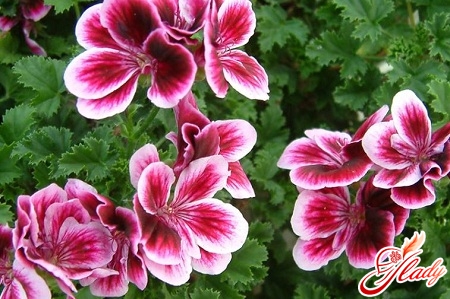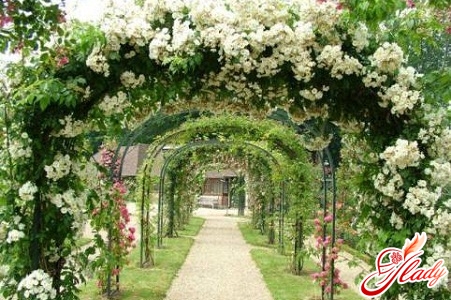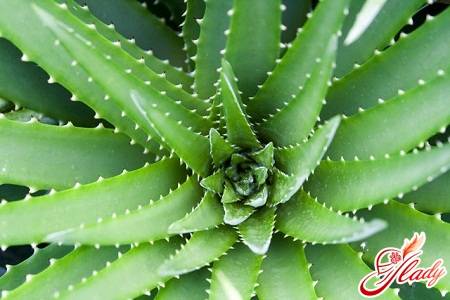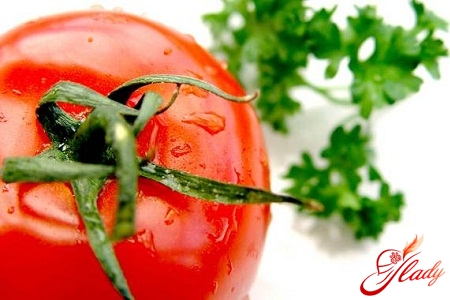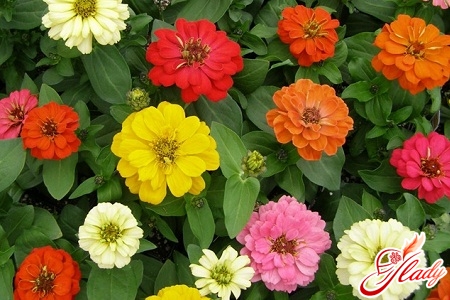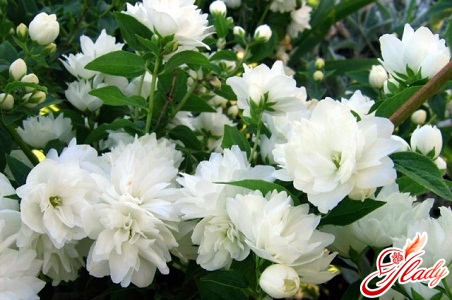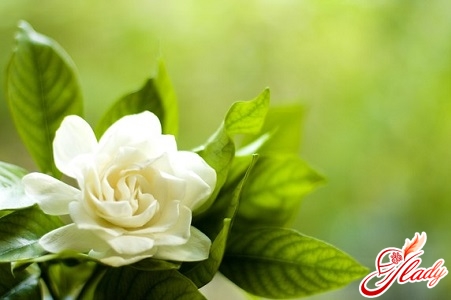 Not long ago, we began to have a fashion for giving gifts.flowering potted plants. What's the big deal? A great alternative to cut flower bouquets! That's why many people who aren't experienced in gardening become owners of unusual, rare, and sometimes even exotic indoor plants. And among them is gardenia jasminoides. Of course, it's nice to receive a bush strewn with flowers as a gift. But often the gifted gardenia doesn't live very long. At first, it pleases us with its gorgeous appearance and aroma, and then the flowers fall off, the leaves first turn yellow, then blacken, and the flowering bush gradually dies. So how can you preserve it? Is it difficult to care for such a beautiful but capricious specimen at home? Can it be propagated? Should it be replanted? And what kind of plant is it anyway? Let's figure it out.
Not long ago, we began to have a fashion for giving gifts.flowering potted plants. What's the big deal? A great alternative to cut flower bouquets! That's why many people who aren't experienced in gardening become owners of unusual, rare, and sometimes even exotic indoor plants. And among them is gardenia jasminoides. Of course, it's nice to receive a bush strewn with flowers as a gift. But often the gifted gardenia doesn't live very long. At first, it pleases us with its gorgeous appearance and aroma, and then the flowers fall off, the leaves first turn yellow, then blacken, and the flowering bush gradually dies. So how can you preserve it? Is it difficult to care for such a beautiful but capricious specimen at home? Can it be propagated? Should it be replanted? And what kind of plant is it anyway? Let's figure it out.
Gardenia as a species
Gardenia, which has become widespread asindoor culture, belongs to the numerous family of madder. At home, as a rule, jasminoides gardenia is grown, although the family of these plants includes about three hundred species. In the wild, gardenias grow in the subtropical forests of Japan and China, and they got their name from the British doctor and botanist of the eighteenth century Alexander Garden. Gardenia bushes are also grown in gardens, where they grow up to one and a half meters in height. But at home, gardenia jasminoides, also known as Gardenia Augusta and Cape jasmine, does not exceed fifty centimeters in height. At the same time, indoor gardenias retain their decorative effect even without flowers, but with proper care they can bloom all year round. And the flowers covering the bush are simply gorgeous - snow-white or with a yellowish tint, quite large and exuding a delightful aroma! Usually the bush is covered with numerous single flowers, but sometimes they are collected in lush inflorescences. The bush itself retains its decorative qualities even without flowers. Its shoots are smooth and strong, and the glossy dark green leaves with stipules are arranged oppositely. The crown of the gardenia can be formed independently, periodically pruning the plant and giving it the shape of a lush bush or a small tree. Several varieties of gardenia jasminoides are common in home gardening, differing in the size of the bush, the shape of the flowers, and the flowering time.
- Gardenia Veitchii has double terry flowers of white color. Particularly prized for flowering in winter.
- Gardenia Makino or Radicans also has double fragrant flowers.
- Gardenia Kleim's Hardy is valued for its miniature size and waxy flowers.
- Gardenia Variegata is characterized by double colors and yellowish specks on the leaves.
- Gardenia Fortuniana (Fortuna) has large enough flowers, similar to a camellia.
- Gardenia First Love blooms from the beginning of spring until the end of summer. Has very large cream-white flowers with a strong aroma and can bloom repeatedly.
- Gardenia Flore Pleno also features large double flowers.
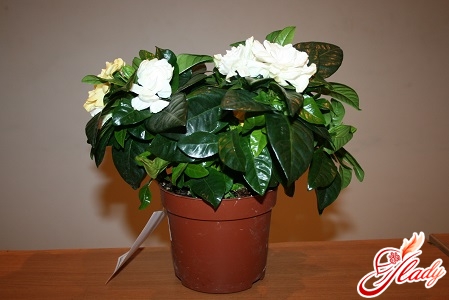
Gardenia Care
Jasminovid wardrobe is enoughкапризным домашним растениям, которым требуются и особенные условия для цветения, и внимательный уход. Тем не менее ухаживать за гардениями не очень сложно, если знать требования к их выращиванию и содержанию. Первое необходимое условие комфортного существования гардении в домашних условиях – освещение. Эти цветы нуждаются в ярком освещении в течение всего года. Поэтому лучше всего располагать горшки с цветами на западных и восточных окнах, а в зимнее время обеспечить гардениям дополнительную подсветку. Подсвечивают их люминесцентными лампами, которые располагают примерно в пятидесяти сантиметрах над кустами. Дополнительное освещение потребуется и тем гардениям, которые расположены на северных окнах. Несмотря на любовь к яркому свету гардения жасминовидная не переносит прямого солнца, поэтому ее необходимо притенять, защищая от солнечных лучей. Очень важно регулировать освещенность в период цветения и бутонизации гардений. Если в это время растение переставлять с места на место или даже поворачивать куст разными сторонами к источнику света, то гардения сбросит бутоны. Опадают бутоны и цветы и при недостатке света. Правильный уход за гардениями требует и определенного температурного режима. В теплое время года температура в помещении с гардениями не должна быть ниже 22 градусов. С наступлением осени температуру необходимо понизить до 18 градусов и поддерживать ее все холодное время года. Также важно, чтобы зимой ночная температура не опускалась ниже 16 градусов. Такой температурный режим необходим для закладывания цветочных почек. Если гардения будет зимовать в теплом помещении (с температурой выше 21 градуса), то с наступлением весны она может не зацвести. И еще необходимое условие для цветения гардений – одинаковая температура почвы и воздуха. При разнице температур у растения зачастую не наступает цветения. На цветение гардений влияет не только освещение и температура, но и режим полива. Именно режим, так как правильный уход подразумевает более или менее обильный полив в период вегетации и покоя. В осенне-зимнее время гардении поливают более чем умеренно. Осенью необходимо дождаться полного высыхания верхнего слоя земли в горшке и только через два дня после этого поливать растение, а зимой промежутки между поливами увеличивают. Примерно со второй половины марта или чуть позже полив становится обильнее, но все еще остается умеренным и острожным. Такой режим выдерживается до конца весны, а затем гардении начинаю поливать обильно и часто: как только высохнет верхний слой почвы. Поливают гардении отстоявшейся слабокислой водой, температура которой должна быть чуть выше комнатной. При пересушивании почвы и недостатке влаги у гардении мельчают и желтеют листья Уход за гарденией во время бутонизации и цветения включает и поддержание повышенной влажности воздуха. Опрыскивать растения можно только до начала раскрытия бутонов. Если опрыскивать цветущий куст, то на лепестках появляются грязно-коричневые пятна. А чтобы повысить влажность воздуха, можно поставить цветочный горшок в поддон, заполненный увлажненным торфом или керамзитом. Гардении нуждаются и в периодической подкормке. Так, например, молоденькие кусты удобряют каждые две недели, чередуя минеральные и органические подкормки. Уход за взрослыми гардениями включает еженедельную подкормку удобрениями, не содержащими кальция. Правда, удобрять гардении нужно только в период вегетации, так как в другое время при избытке в почве минеральных веществ у гардении вянут и опадают листья. 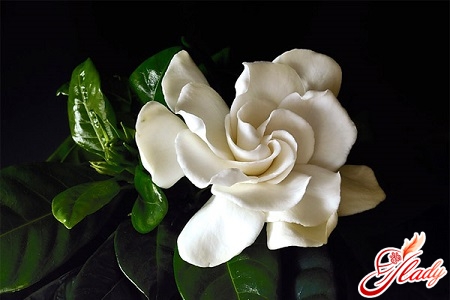
Transplanting, pruning and reproduction
Indoor gardenias need pruning.This is necessary both to maintain the decorativeness of the bushes and for the good growth of gardenias. Pruning is carried out immediately after flowering, shortening weak and thickening shoots by half. If you pinch young shoots during the growing season, this will stimulate the growth of lateral branches and the formation of flower buds. By the way, the cuttings left after pruning can be used to propagate gardenias. It is propagation by cuttings (as opposed to growing new plants from seeds) that is especially popular in indoor floriculture. Gardenias are also most conveniently propagated by cuttings. For this, use the semi-lignified cuttings about ten centimeters long left after pruning. You can also specially cut cuttings for propagation. But this should be done in the spring or autumn. The cuttings are planted in a soil mixture of sand and peat and the container is covered with a transparent dome. The improvised greenhouse is ventilated from time to time and the cuttings are sprayed. After about a month, when roots appear, the cuttings are planted in pots filled with a mixture of coniferous soil, peat and sand. Theoretically, it is possible to propagate gardenias from seeds. The fact is that after flowering, inedible fruits appear on the bushes. If you wait until the fruits are fully ripe, collect the seeds and sow them, it is quite possible to get new shoots. However, this method of propagating gardenias at home does not make sense, since it is only relevant for breeding work. Gardenias do not need frequent replanting. Only adult plants that are too small for a flower pot need to be replanted. This is usually done every two to three years. But young plants are recommended to be replanted annually. It is also advisable to replant newly purchased gardenias. However, this should be done only after flowering. When replanting, the roots of gardenias are trimmed and the substrate is completely replaced. Within a month after transplanting, gardenias are watered with water with lemon juice added (a few drops per liter). In short, if you take care of the beautiful gardenia correctly and create comfortable conditions for it, it will constantly delight you with lush flowering. And now you know how to do this. Good luck! Not long ago, we have become fashionable to give flowering potted plants as gifts. And what? A wonderful alternative to bouquets of cut flowers! And that is why many people who are not experienced in floriculture become owners of unusual, rare, and sometimes exotic indoor plants. And among them is gardenia jasminoides. Of course, it is nice to receive a bush strewn with flowers as a gift. But often the gifted gardenia does not live very long. At first, it pleases us with its chic appearance and aroma, and then the flowers fall off, the leaves first turn yellow, then blacken, and the flowering bush gradually dies. And how can you preserve it? Is it difficult to care for such a beautiful but capricious specimen at home? Can it be propagated? Should it be replanted? And what kind of plant is this anyway? Let's figure it out.




